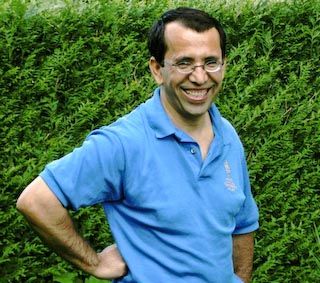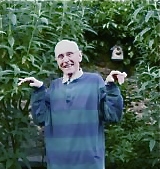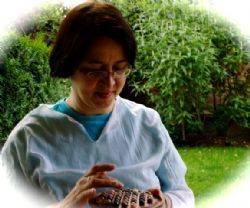| Vincent Henriot |
The man has seen more than seventy-one years of life on this planet. He lived through the rigors and terrors of Nazi occupation in the early 1940s. Charles de Gaulle, who led the Free French forces in the liberation of France, had earlier been a suitor of Vincent’s mother, and long remained a family friend. Even while President of the French Republic, he would hand-write notes to the family on special occasions.
Vincent remembers his own youth, when as a young man beginning military service, he chose duty in the Sahara desert as a discipline to prove his love for the woman who later became his wife. When telling this, he smiled in gentle irony and said: “I was a romantic in those days.”
As a soldier in the French colony of Algeria of the time, Vincent carried out orders which became repulsive to him. He perceived their inhumanity. Some years later and in public, he apologized to an Algerian for things done while stationed as a soldier in that country.

When Amo and Michele had both been homeless in Paris, they were befriended by Vincent as he visited the destitute who congregated at the train stations of the city. Along with his associates, he served tea and coffee, but knew that it was the warmth of human friendship—
the smile, the friendly word, the hand on the shoulder, which brought
God’s love.
Hope would be kindled again, and smiles would ease the pain.
My daughter told me that Vincent had produced a film about a special place of pilgrimage. As we watched this DVD, my heart was deeply touched. Lough Derg is located in the northern part of the Republic of Ireland, and is reached by boat. Pilgrims come for three days of dedicated soul searching, penance, and commitment. They deprive themselves of sleep, of shoes, of fancy food, and of communication devices as they seek the Presence of God and the peace which He alone can give.
Just two days before meeting Vincent, I had accompanied a group of photo students, our teacher and the tour staff, to a remarkable place in Normandy. It is the Abbey and village of Le Mont St. Michel. This abbey, recognized throughout the world by its awesome appearance as it rises above the little island, has a history going back to the early dukes of Normandy, who were descended from Viking kings. William (the Conqueror) who defeated the English at the battle of Hastings in 1066 and became king of England, used Le Mont St. Michel as a military stronghold.
It was established in the medieval church tradition, strongly allied with the ruling royal and military powers of France.

After walking Le Mont St. Michel and taking photos, I read from the booklet describing the history of the place. What I read troubled me.
It was not until several days later while seeing the DVD of Lough Derg, that I saw the stark contrast between the two places. Both are historically in the Roman Catholic tradition where mass is celebrated, yet the spirit of the two is poles apart.
Le Mont St. Michel was a place where pride, wealth and hidden sin ruled.
Lough Derg is a place where humility, abstinence from fleshly activity, and devotion to one’s God is evident. We can thank Vincent Henriot for documenting its example for us. One is reminded of what Our Lord Jesus Christ said when teaching us to discern truth from error:
“Beware of the false prophets who come to you in sheep’s clothing, but inwardly are ravenous wolves. You will know them by their fruits. Grapes are not gathered from thorn bushes nor figs from thistles, are they? So every good tree bears good fruit, but the bad tree bears bad fruit.
A good tree cannot produce bad fruit, nor can a bad tree produce good fruit. Every tree that does not bear fruit is cut down and thrown into the fire. So then, you will know them by their fruits.
Not everyone who says to Me, ‘Lord, Lord,’ will enter the kingdom of heaven, but he who does the will of My Father who is in heaven will enter. Many will say to Me on that day, ‘Lord, Lord’ did we not prophesy in Your name, and in Your name cast out demons, and in Your name perform many miracles?’
And then I will declare to them, ‘I never knew you;
DEPART FROM ME, YOU WHO PRACTICE LAWLESSNESS.’”
(Matthew 7:15-23)
Thank you, Vincent Henriot, for helping us see that Truth comes from the inner life, where we have enthroned Our God, and that sooner or later, the outward appearance will reveal it.
Indeed, may our own fruit be worthy of Our Father’s approval.
Lindsay House, June 5, 2008

